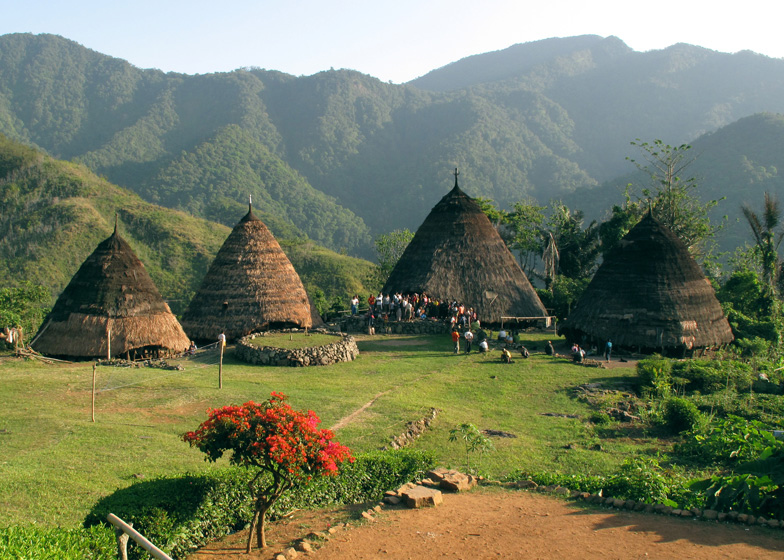This project by architecture collective Rumah Asuh involved the repair and reconstruction of the last remaining traditional thatched residences on Flores Island, Indonesia.
Built using traditional Manggarai techniques, the conical houses originally comprised a group of ten, but six had collapsed and two others had suffered significant decay.
Led by architect Yori Antar, the Rumah Asuh team embarked on a project to repair these two buildings and then to replace the others. They organised sponsors to fund the construction, then enlisted members of the local community to help plan and build each structure.
"When I go to school what we learn is about modern structures, the concrete, the steel; but we never learn about this kind of building," said Antar, explaining his decision to get involved in the project. "There's a lot of things we can learn from these kind of buildings, like how we adapt with the [regional] climate."
Each of the houses features a lightweight bamboo framework tied together with rope. The exterior is clad with a layer of rattan, made from locally sourced worok wood, and is designed to be renewed every few years using materials from the forest.
The architects also encouraged involvement from university students, who will continue to maintain the structure of the houses each year.
The Mbaru Niang preservation is one of 20 projects on the shortlist for the Aga Khan Award 2013. Other projects on the shortlist for the $1 million prize include an Islamic cemetery in Austria and a reconstructed refugee camp in Lebanon. See more from the Aga Khan Award shortlist.
See more architecture in Indonesia, including a house containing pools of water and trees.
Here's a short project description from the Aga Khan Award organisers:
Conical houses of 'worok' wood and bamboo in tied-together rattan construction with thatched roofs are the archetypal buildings of this remote island village.
A group of young Indonesian architects in the habit of touring a part of Indonesia each year arrived to find four of the last surviving examples of these houses, two of which were in need of renovation. Symbols of unity in the family and the community, the houses represent a living culture; the villagers are guardians of this culture but the necessary building skills, having traditionally been handed down, from generation to generation, had faded from memory.
The architects initiated and facilitated a community-led revival of traditional techniques enabling all the original houses to be rebuilt. In this a role was opened up to include university students who both participated in and documented this architectural preservation and cultural conservation project and continue to do so annually.
Location: Wae Rebo Village, Flores Island, Indonesia (South-East Asia)
Architect: Rumah Asuh/Yori Antar, Tangerang, Indonesia
Client: Wae Rebo Community
Completed: 2011
Design: 2008
Site size: 6,500 sqm

